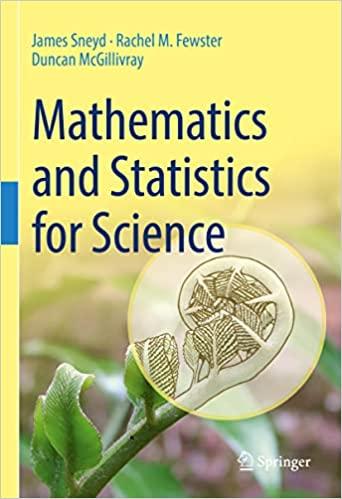Georges Buffon was a wealthy 18th century French mathematician who became famous for dropping needles on his
Question:
Georges Buffon was a wealthy 18th century French mathematician who became famous for dropping needles on his wooden floorboards. He derived the probability that a needle thrown at random would cross one of the cracks in the floorboards.
Fig. 36.5 shows the setting, with needles of length d tossed on floorboards of width L. Some of the needles cross a crack, and some of them don’t.
Buffon calculated that the probability the needle crosses the crack is How funny to meet π in a probability! It’s because the probability depends on the angle of the needle, and where there are angles, π is sure to follow. (It’s well known that π rushes in where angles dare to tread.)
P(needle hits crack) = 2d Lπ
.
Buffon realised this provided a way of estimating the value of π. The Italian mathematician Mario Lazzarini carried out the experiment in 1901 by tossing a needle 3408 times, with needle to floorboard ratio d/L = 5/6. Lazzarini obtained 1808 hits out of his 3408 throws. Well, he might have done. Not everyone believes it.
a. Let X be the number of hits in Lazzarini’s experiment of 3408 trials. What is the distribution of X? Leave π as a symbol in your answer.
b. What is E(X)?
c. Find a formula for π in terms of E(X).
d. Suggest an estimator for π based on any observation, X.
Hence calculate Lazzarini’s estimate of π, quoting your result to six decimal places.
e. Is your estimator in part
(d) the maximum likelihood estimator for π? Briefly explain your answer.
f. The true value of π to six d.p. is 3.141593. Did Lazzarini’s You can access the value of π in R to high precision simply by typing pi.
estimate come close? What is the probability that he would get an answer as close as he did, based on his experimental design? Write it out as a probability statement involving X, and use R to find the answer.
Lazzarini’s estimate was so close that it seems a little incredible. But it’s been pointed out that his whole article might have been intended as a bit of fun. Read all about the controversy on Wikipedia.
Step by Step Answer:

Mathematics And Statistics For Science
ISBN: 9783031053177
1st Edition
Authors: James Sneyd, Rachel M. Fewster, Duncan McGillivray






